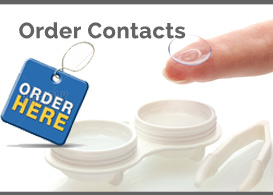Treatment and Management of Ocular Disease
- Dry Eyes. We are proud to offer dry eye treatment for our patients. Ocular Surface Disease, also known as dry eye, can occur from certain medications, naturally by aging, or as a symptom arising from systemic diseases such as Sjogren’s syndrome, Rheumatoid arthritis, or Lupus. If you have a minor case of dry eye, you may be experiencing irritation, excessive tearing, fluctuating vision, and/or a burning sensation in your eyes. Excessive dry eyes, or dry eye symptoms that go untreated, have the potential to damage eye tissue, scar your corneas, and impair your vision.
- Glaucoma. Glaucoma occurs from damage to the eye’s optic nerve and can often lead to loss of vision and blindness. To detect glaucoma, our highly trained doctors will perform a proper screening to determine severity, examine the damage, and help you manage your glaucoma.Early detection of glaucoma is crucial in preventing vision loss and blindness; the earlier the better. However, there is no official cure for glaucoma. There are several treatment methods that manage, slow down, or halt the process. Treatment for glaucoma will vary depending on the stage and severity for each individual patient
- Cataracts. Cataracts cause a clouding of the lens in the eye, making your vision appear to be foggy. Cataracts are the most common cause of vision loss in people over 40 and are the leading cause of blindness in the world.Your eyes are meant to naturally adjust to normal light changes, adjust focus, and allow us to see both near and far. Your lens is primarily made up of water and proteins. The proper arrangement of these proteins is what contributes to normal vision. Some of these proteins clump together forming a clouding of the lens.
- Keratoconus. Keratoconus is a non-inflammatory disorder that affects the cornea. The cornea becomes thinned and steepened, resulting in distorted vision, sensitivity to light, and decreased vision. Symptoms typically manifest in a person’s younger years, usually the late teens or 20’s.Keratoconus can affect a person’s ability to read or drive, which can be a major obstacle for people. Luckily, this is a condition that can be diagnosed through a routine eye exam, which underscores the importance of scheduling regular eye exams for you and your children.
- Diabetic Eye Exams. Diabetes can affect more than just your blood sugar. It can also do some damage to your eyes if you are not careful.Diabetic eye disease can cause vision loss if you are not careful. It can cause you to have trouble with everyday tasks even if you have regular glasses or contacts. It can even cause blindness.
- Age Related Macular Degeneration. Macular degeneration is a deterioration of the central portion of the retina, the inside layer of the eye that records the images we see and sends them through the optic nerve from the eye to the brain for processing. The macula, or the center of the retina, is responsible for focusing central vision in the eye and controls our ability to see and process information.
- Orthokeratology. Ortho-k involves temporarily reshaping the cornea through the use of specialized contact lenses, which are designed to be worn while sleeping. Although these lenses are not very common and most people still prefer laser surgery, this reshaping method is gaining more popularity as the procedure continues to be improved.
- MiSight. The FIRST and ONLY FDA-approved* soft contact lens proven to slow the progression of myopia (nearsightedness) in children, aged 8-12 at the initiation of treatment.


